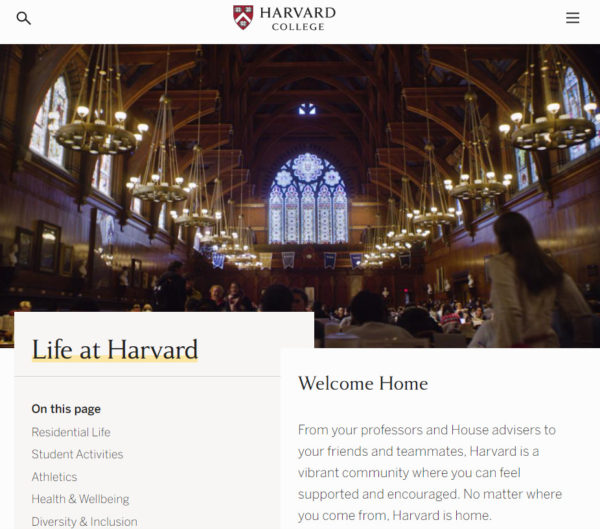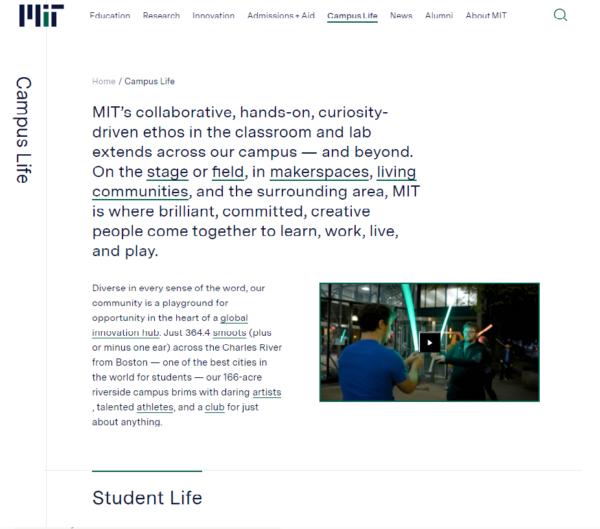
People pursue higher education to better their job prospects, increase their future earning potential, broaden their world view, and educate themselves on topics they’re passionate about. Any type of higher education requires a significant investment of both time and money by the student.
As a result, potential students can be understandably selective when it comes to choosing an educational institution. This is where higher education branding can help your school stand out.
Today, there are more methods of accessing higher education than ever. Students can earn a degree or diploma online or in person, full-time or part-time, overseas, or in their native country. This diversification increases competition among schools. More than ever, educational institutions have to compete for students instead of students competing for admission.
Stay connected to students, families, and staff with expert marketing advice and all the tools you need, all in one place.
University fairs at local high schools will no longer cut it. Higher education institutions need to invest in marketing and branding strategies that appeal to their target markets directly.
What is higher education branding?
At its core, branding is the process of developing a single, coherent presentation for a product, service, or institution. Higher education branding is no different. Developing a clear brand for a university helps keep your message consistent on every platform. It also helps prospective students feel like they know what to expect, which is key to helping them choose your school.
Developing a brand that’s meaningful, consistent, and appealing involves understanding two core ideas:
The brand should be honest.
It’s easy to brainstorm great ideas for a potential brand that doesn’t apply to your institution. Positioning your school as a great choice for musicians doesn’t make sense if the fine arts department is the smallest program on campus. While there may be a gap in your local area that could be filled by a qualified music program, highlighting an offering that’s not your school’s strong suit is misleading and unhelpful.
Instead, keep your current brand true to what the school is now — not what you hope it will be. Focus on the institution’s strengths, and highlight the music program when it’s been developed further. Focusing on strengths helps maintain your school’s reputation while drawing in students who appreciate what you have to offer.
The brand should be interesting.
According to the Association of American Colleges and Universities, there are 2,618 four-year accredited institutions in the U.S. On average, that’s about 52 per state. With such a huge number of choices available, your brand must stand out from the competition.
Research your competitors, including schools nearby and those farther away with similar specialties. See what types of opportunities they highlight, and consider where your institution’s offerings are stronger.
Break out of the “beautiful campus and smiling students” marketing box, and highlight the things that are truly unique to your institution. If you can’t catch the eye, you’re unlikely to kindle students’ interest.
These two ideas may seem to be in opposition, but they shouldn’t be. Every institution has traditions, faculty, or opportunities that stand out from the crowd. The goal is to emphasize these items while still appealing to a wide variety of students.
Why is branding important for higher education?
Branding is how your university presents itself to the world. People inside and outside your institution will develop opinions about your school, whether or not you’re working to create a focused brand. The process of branding helps you take control of these opinions and influence them for the better. So why does this matter?
Trust and recognition
People like knowing what to expect from institutions, especially those where they may spend years of their life. Building your brand helps you unify your school’s many departments and programs under a single, coordinated umbrella. Instead of collecting mismatched marketing materials and content, you can use your brand as a template for every department to follow at once.
This consistency helps current and potential students trust your messaging. They learn to recognize your signature colors, font, and logo. Just as importantly, they are more likely to believe that you mean the messaging you put out because the tone and content remain consistent.
Few assets are more valuable to an educational institution than recognition and trust because that’s the basis for gaining and retaining students long-term.

Targeting students
A good brand is designed to appeal to a specific, ideal “customer.” In higher education, that customer is your ideal student.
You can develop a brand that explicitly appeals to certain types of students — for example, consider the difference in branding between Harvard and MIT. Both universities target high-achieving students, but they portray themselves differently to support their unique cultures.
If you want to foster a certain type of community among your student body, your brand is an important tool.

Standing apart
While your brand should focus on assets that set your university apart from the competition, the brand itself can be an asset that stands out.
As your university becomes well-recognized and earns the community’s trust, your brand creates value for the institution. When you have developed your brand, people who recognize it are more likely to consider your school simply due to familiarity.
Tips for great branding
Branding doesn’t have to be hard. Here are some tips for building an interesting brand for your university that will stand the test of time.
- Do your research. Before you put together any type of branding, research your competition. Look at how your competitors’ position their school. Who are they targeting? Stand out from your competition by playing to your school’s strengths and be sure that message is conveyed in your logo, slogan, and marketing materials.
- Put together a style guide. Once you decide on items like colors, fonts, a slogan, logos, and language choices, write down your decisions. A style guide, also known as a brand book, will help every department in your institution keep its messaging consistent. It will also provide a valuable document in the future in case you need to expand or alter any aspects of your brand.
- Clean up your online presence. Outside of the small population that lives in the same neighborhood as your campus, most people will first explore your institution through the internet. Once you’ve created your brand, take the time to update every page on your university’s website. This isn’t a simple undertaking for most modern institutions, but it’s worthwhile. Your website is your public face — give it the attention it deserves.
- Don’t underestimate giveaways and events. If you’re trying to raise community awareness of your brand, hosting events or offering free gifts can go a long way. These tactics get your brand in front of potential students who otherwise may never have considered you. It’s a foot in the door; people are much less likely to forget about you if they regularly use your pen or wear your T-shirt.
Branding has become a critical part of running a successful institution of higher education. Students can choose from thousands of potential colleges, and branding is an important method of encouraging them to choose you.
By highlighting the unique aspects of your institution and presenting a consistent, appealing message, you can build a brand that will keep your school relevant to students for years to come.




